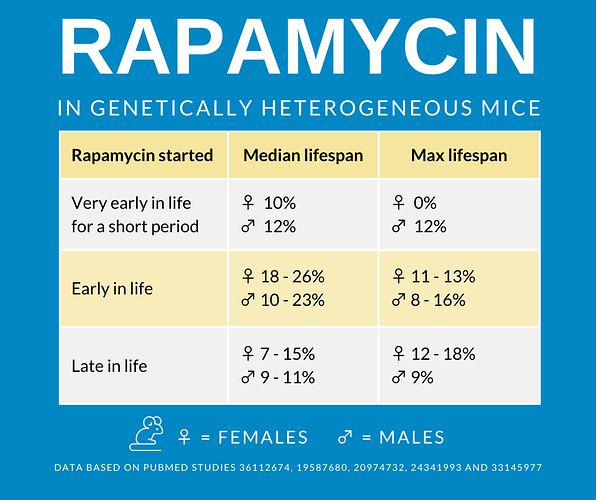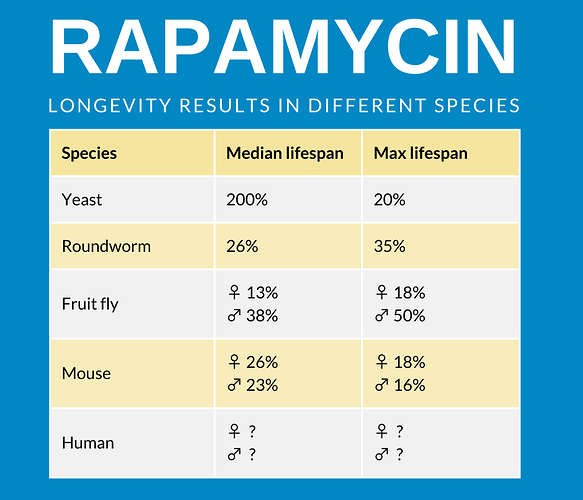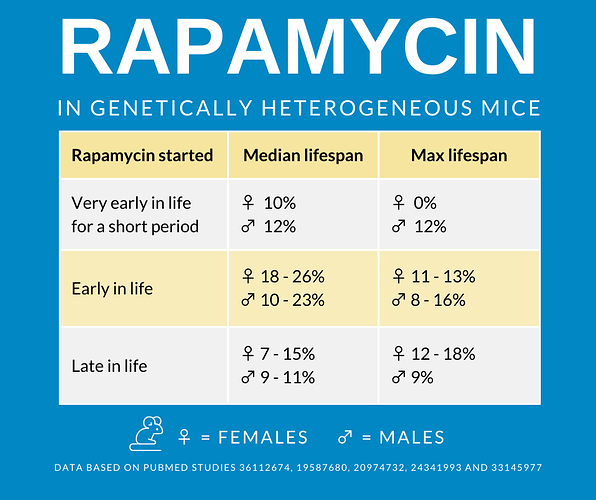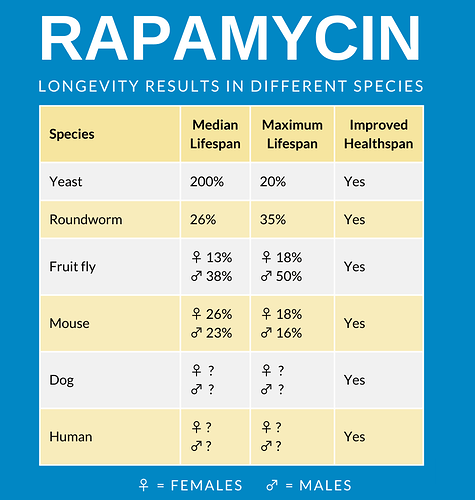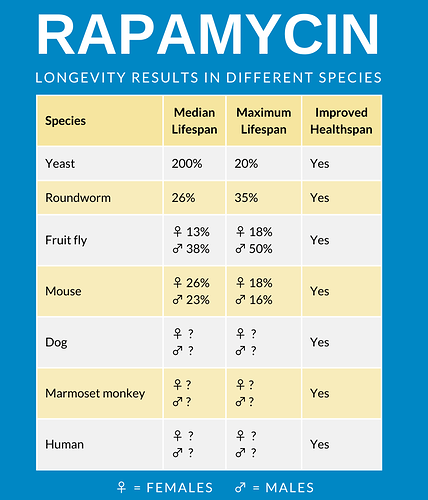Rapamycin has shown to extend both median and maximum lifespan in different species. Have I missed some species which rapamycin has been tested on?
It does not increase maximum lifespan, it increases 90th percentile lifespan.
Yes, this is little bit confusing I agree but usually how the maximum lifespan is calculated as I have understanded it is that the researchers look at the 90th percentile lifespan and call it for the maximum lifespan. I’m humble if I have understanded this wrong. But what would the researcher call the 90th percentile lifespan in studies? Because they don’t call it “90th percentile lifespan”.
For example here is one rapamycin study
Here is another on caloric restriction
“It is especially noteworthy that rapamycin feeding can extend mouse lifespan even when started late in life”
I am always happy to find some confirmation that I am not taking rapamycin in vain. ![]()
Wasn’t there a trial done on primates on Rapamycin? Also is the dog data available yet?
Yes, I fully agree, here is a nice summary of five different papers on lifespan extension on heterogenous mice.
Great! Do you have the paper on the primates and/or the values on median and maximum lifespan extension?
I think the dog studies are still ongoing and no lifespan data has yet been presented. Just healthspan improvement but I will add a new column to the image with healthspan improvements. What do you think about this?
The marmoset studies with rapamycin are ongoing right now. I need to send an email to one of the guys involved in those studies on a different issue, so will ask him about the timeline for them also, and report back. So far they’ve only reported some prelininary results: Metabolic consequences of long-term rapamycin exposure on common marmoset monkeys (Callithrix jacchus) - PMC
And the dog study with rapamycin is still in its early days - I think a few years before we hear anything from them.
Why no lifespan studies in rats?
I’m not completely sure, but probably because there have already been a ton of studies (successful studies) on mice (a rodent very similar to rats, evolution-wise): List of all the Mouse Studies Showing Rapamycin Lifespan Extension
Rats are just another rodent like a mouse - so there would not be much additional to learn from having them do a lifespan test with rapamycin. There is about a 99.9% probability that they’ll get the same result that has been seen with mice.
Far better to move to a new mammal closer to humans, such as dogs or marmosets (primates), and thats what researchers have now done.
And - it seems rats live a bit longer on average than mice, this source (below) suggests up to 7 years, so if they fed the rats rapamycin they could live up to 10 years long. That is a really long time for an academic study to last (remember, academics have to “publish or perish”, so they could perish before any paper was published if they used rats). And the longer a study goes, the more expensive it becomes. So if a good mouse rapamycin lifespan study costs about $500,000 (I think thats what the NIA ITP studies cost per compound approximately) then a rat study could easily cost 2 or 3 times that amount (because it would last 2 to 3 times longer), plus the higher cost of the rats, and feed (since rats eat more than mice), etc.
Great, I have added that to the list also. if you find out anything about the time line that would be very interesting. Do you know what the time line is for the dog project?
@Krister_Kauppi What is the thinking behind why rapa early in life for a short time extends life in mice? It can’t be resolving the overactivation of mTOR, or am I missing something important?
I would say the reason why early in life works as it does is it slows down things even more but can go too far and have bad effects on development growth and make the animals weak, fragile etc.
Mikhail talks little bit about it here:
In this short clip Matt Kaeberlein talks about genetic mutation of mTOR
So the animal can get too weak and fragile to live a long life. The interesting thing with the image you pointed at (the below one) is that females don’t get max lifespan extension. My guess here is that in general females are smaller, a little bit weaker and fragile than male, and this is one reason why they live longer. This is also well aligned with supercentenarians which in most cases are tiny females. But if we try to inhibit mTOR too much in a female it may be too much and it leads to that the max lifespan extension is lost. Super interesting area.
